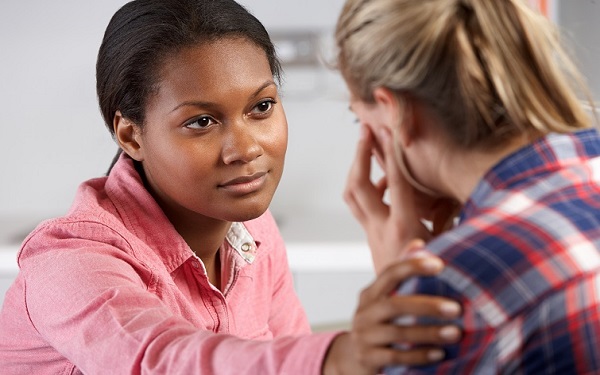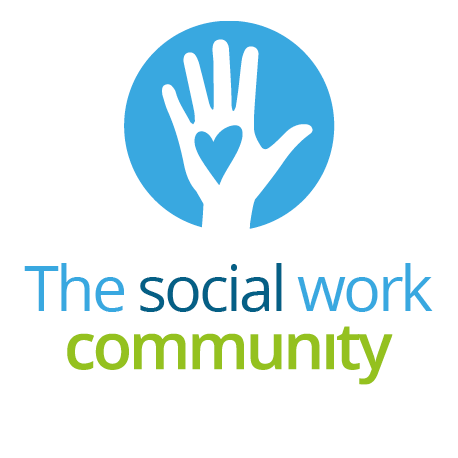
Mental healthcare for looked-after children is ‘inadequate’ and often ‘unevidenced’, experts have warned.
Despite having significantly higher needs than their peers, children in care are often shut out of mental health services, including on the grounds of “pseudoscientific” views about trauma, according to a report by specialist clinicians and academics.
To tackle the issue, councils and the NHS should commission evidence-based services, delivered by teams with co-located social care and mental health staff, said the study. Social workers and personal advisers should receive high-quality training in mental health, while mental health practitioners working with looked-after children should be skilled up to better understand their needs, it added.
The report on improving children in care’s access to evidence-based mental health care was produced by academics from University College London, King’s College London, and Cambridge, Bristol, Sussex and Kingston universities, in partnership with the UK Trauma Council and CoramBAAF. It was commissioned by the government funded National Institute of Health and Care Research.
Mental health needs far higher than general population
While the rate of mental health disorders in the general population aged 5 to 15 was 10%, it was 45% for looked-after children, according to 2021 guidelines on supporting the group produced by the National Institute for Health and Care Excellence (NICE).
This reflected their greater exposure to known risk factors for poor mental health, including abuse, neglect, poverty, parental substance misuse and mental illness, the impact of separation from their families and experiences within the care system, including frequent placement moves, said the new study.
Despite this, their access to evidence-based mental health support was “poor”, it added.
CAMHS ‘rejecting referrals for children in care’
While acknowledging the general pressures on child and adolescent mental health services (CAMHS), the report said many did not accept referrals for children in care or only did so in relation to very specific needs.
CAMHS rejected referrals on the grounds of the child’s needs being “a social care issue” or operated unofficial thresholds under which children were not seen if their placement was seen as stable, despite this group being likely to have the highest mental health needs, the report said.
Children in care commonly accessed help through bespoke teams for the group, commissioned by councils, the NHS or both. However, the services provided by these teams were often indirect – for example, helping foster carers meet children’s needs or providing consultations for social workers – leaving young people without direct support for their needs.
And joint working between children’s social care and CAMHS was often inadequate, “with service leaders rarely meeting, and a lack of shared understanding of need from the commissioning level to the front line”.
From evidence-based care to ‘pseudoscience’
The inadequate access to care was exacerbated by a “growing trend” in social care and CAMHS to “move away from evidence-based mental health practice and towards pseudoscience”, particularly in relation to trauma.
Practitioners tended to overemphasise attachment issues among children in care, describing mental health needs using “non-specific trauma labels, such as using ‘developmental trauma’, instead of established conditions, such as post-traumatic stress disorder (PTSD)”.
The report said this was “largely driven by the pervasive myth that children in care do not meet criteria for existing mental health difficulties”.
Use of costly services lacking an evidence base
It also criticised a growing use, by some children’s social care services, of costly, large-scale services that lacked any evidence base, often with no effort made to transparently assess their potential benefits and harms.
Inadequate funding also led to inappropriate provision, for example, offering few or low-intensity sessions to children with multiple and complex mental health needs, which the report likened to “putting a Band-Aid on a broken leg”.
Even in services that did provide evidence-based mental healthcare to looked-after children, there was “rarely the staffing or general resource capacity to adequately address the scale of need”.
Call for co-located teams and mental health checks
The study made five key recommendations to enable children in care to access the evidence-based mental health services they needed:
- All local authority areas should develop a joint service delivery plan between CAMHS and children’s social care, with clear accountability for assessment and treatment and key performance indicators (KPIs), including to measure access to care and young people’s perceptions of its impact.
- Looked-after children should receive a health and wellbeing assessment, including a comprehensive mental health check covering standard and trauma-specific symptoms, four to six months after entering care
- Councils and the NHS should commission a service, delivered by co-located teams of children’s social care and CAMHS staff, offering evidence-based direct support to children in care – and potentially, care leavers – as well as indirect support to professionals and carers supporting them. It said co-location should build “a culture of shared understanding and shared learning”, but added that these teams should also work closely with CAMHS services more generally, so they could refer young people on where required.
- A training programme should be set up to upskill the children’s social care-based mental health workforce on the needs of children in care and to enable them to provide low-intensity, evidence-based therapies to them.
- NICE should update its guidelines on looked-after children, which, according to the report, were “commonly interpreted or misused by services in such a way as to ultimately not provide best-evidenced care”. The update should stress the importance of relevant services following NICE’s separate guidelines on mental health, and that children in care have high rates of both common and trauma-related mental health needs that should be assessed using existing standardised measures.
Improved training for social workers urged
The report also made four further recommendations specific to children’s social care, including for social workers and personal advisers to receive high-quality, evidence-based mental health training, to increase their mental health literacy.
This should include understanding of the overlap and differences between trauma, mental health and neurodevelopment, confusion around which can impede practitioners’ ability to support children in care and create barriers to inter-agency working.
The other social care-specific recommendations were for:
- Children’s social care staff and foster and kinship carers to receive high-quality and mandatory training on talking to children about mental health, discussing getting mental health support, and supporting a child or young person through therapy.
- All children in care accessing mental health support to be provided with an advocate who is completely independent of the local authority, to help young people understand their rights and access services.
- Social care and CAMHS should co-develop forms for referring children in care to mental health services, with all social care staff trained in filling these in. The report said referrals should focus on observable behavioural or emotional concerns, and the young person’s self-reports of their needs, and not assume all problems are attachment-based or trauma-related.
Children in care not getting support they deserve – government
In response to the report, a government spokesperson said children with mental health issues, including those in care, were “not getting the support or care they deserve” and were a “top priority” for ministers in relation to reforming mental health.
The spokesperson pointed to the Children’s Wellbeing and Schools Bill, which, among other measures, would place NHS organisations and other public bodies under a duty to consider the wellbeing of looked-after children and care leavers and promote access to services for them.
They also referenced the government’s plan to recruit an additional 8,500 mental health workers by the end of its first term in power (which is likely to be 2029) and boost mental health provision in schools.
‘Urgent need for stable care placements’
For the Association of Directors of Children’s Services, president Rachael Wardell said the study showed “the urgent need for stable placements, trusting relationships with carers and social workers, and timely access to mental health support that truly understands trauma” for looked after children.
However, “too many children in care [were] facing long waits or inconsistent support” due to a “postcode lottery” in CAMHS services, she added. Wardell also stressed that transforming mental health outcomes for children in care also required “a nationally led, well-funded effort is needed to build and sustain a strong workforce across all children’s services and partner agencies” and reform of the placements market to provide young people with stability.
Recommendations ‘should be considered in NHS reorganisation’
Rebecca Gray, mental health director at the NHS Confederation, said: “Mental health trusts understand that many young people don’t always have their needs met. This is particularly stark for young people with complex needs who are in or who have been through the care system.
“Some of this relates to mental health services facing significant pressures but as this report highlights, collaborative working could be improved to address the needs across a child’s life and to join up support across systems.
“Many NHS mental health trusts are working effectively with local authorities to meet the needs of the most vulnerable young people…The recommendations outlined in the report should be considered when looking at how the NHS and local authorities work together at a time of significant reorganisation, including a requirement for integrated care boards to reduce their costs by 50% by the end of this year.”






 Bournemouth, Christchurch and Poole
Bournemouth, Christchurch and Poole  Hampshire County Council
Hampshire County Council  Oxfordshire County Council
Oxfordshire County Council  South Gloucestershire Council
South Gloucestershire Council  Wokingham Borough Council
Wokingham Borough Council  Embedding learning in social work teams through a multi-agency approach
Embedding learning in social work teams through a multi-agency approach  The family safeguarding approach: 5 years on
The family safeguarding approach: 5 years on  Harnessing social work values to shape your career pathway
Harnessing social work values to shape your career pathway  Webinar: building a practice framework with the influence of practitioner voice
Webinar: building a practice framework with the influence of practitioner voice  Workforce Insights – showcasing a selection of the sector’s top recruiters
Workforce Insights – showcasing a selection of the sector’s top recruiters  Free CPD on Parkinson’s for health and social care staff
Free CPD on Parkinson’s for health and social care staff 

 Facebook
Facebook X
X LinkedIn
LinkedIn Instagram
Instagram
Very disappointing to see the true impact of developmental trauma being downplayed. The reality is that poor mental health follows when a child’s need for therapeutic connection with care giving adults is not met. They are intrinsically linked and in my experience most social work practitioners are clear about the difference. PTSD is not an adequate diagnosis to give to children who experienced relational trauma and neglect as infants. It’s extremely offensive to all the different families, parents and carers out there trying to support their children to recover to label the mounting evidence and knowledge in trauma informed practice as ‘pseudo-science’.
and somatic practice is far from a pseudoscience, right?
I thought take on board the totality of this report. As social workers we need to move away from the mindset that we are the sole experts. Ask 20 social workers what developmental trauma is and the it is likely you will get 20 different answers. PTSD on the other hand has a clear diagnostic set of criteria.most social workers fancy themselves as therapists on the side without any therapist training. I call that pseudo- scientific practice. Pays your money make your choice should never be acceptable in our work.
there’s noghing clear about the diagnostic protocol for ptsd what’s so ever ~ the recent coverage of physician associate training is seated entirely in the medical model where the lumping and splitting of treatment protocols are shaped more by contracting premiums between primary and tertiary care ….
… it’s a fair point about the clinical boundaries that designate competency as a therapist although it’s a requirement of social work to see the rathermore detailed ans nuanced systemic issues, and especially systemic invalidation, are today seated in an institutionised organisational separation anxiety starting in the noughties with the Modernisation Agenda ….
… Q: would the US license approach to practice accreditation help ie the LCSW? ….
…. Q: does the becoming a social worker today require a reflexive unbecoming from the current Frommesk sadomasochism; sweet dreams are made of, What?…
Q: How many s75 agreements are currently in place, where are they and what are they doing ?
Q: Why does NICE guidance differentiate between ptsd and cptsd when, in practice, CPTSD is considered and treated as a lumping together of ptsd+anxiety+depression; currently cptsd falls outside the scope of UK disability discrimination protection.
Q: What model of ‘Completely Independent Advocacy’ will be commissioned? The Socio-Legal Model is suited to regional and national procurement but will such an approach potentially bankrupt individual Council’s who created the conditions of harm?
Q: Where’s the cash coming from and how much?
This editorial lacks evidence – conjecture used as foundation for reason why referrals are rejected by CAMHS instead of focusing on helping social workers formulate the underlining issues of the young people’s behavioural health needs which do not always equate mental health needs.
formulate … say more